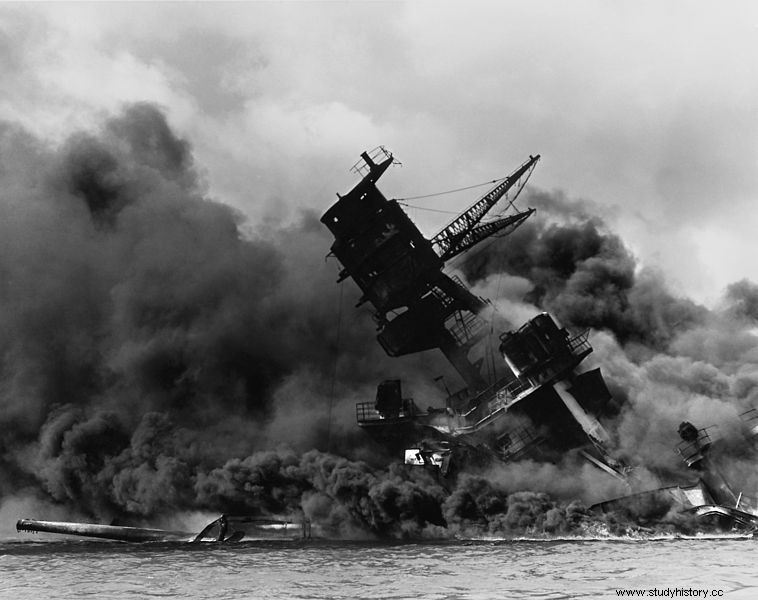World War II began in September 1939, when France and Great Britain declared war on Germany. Japan is allied with Germany and Italy. Japan controls a very large part of the Southeast, and in particular a large part of China.
When Japan occupied Indochina, administered by France, US President Franklin Roosevelt asked Japan to withdraw its troops. To make himself better heard, he froze Japanese assets and caused an embargo on raw materials on Japan. Not appreciating the interference of the United States in their affairs, especially since they have a strong presence in the region through numerous military bases, the Japanese want to attack the Americans by surprise.
Although the United States did not become directly involved in the war, it nevertheless provided American equipment to the United Kingdom and the USSR under the Lend-Lease Act (March 1941). The country is therefore not neutral.
December 7, 1941

Characters
Franklin Roosevelt
Chuichi Nagumo
Winston Churchill
Hiro Hito
Procedure
On the morning of December 7, 1941, the Japanese air force bombed the naval base of Pearl Harbor in the Hawaiian archipelago (Pacific Ocean) as well as the American fleet located there. A total of 188 American aircraft were destroyed, 2,335 Marines died, and 12 battleships were sunk. The American counterattack, although quick, could not reverse the trend and the battle was a clear Japanese victory.
The next day, Franklin Roosevelt goes to Congress to announce the entry into war against Japan, then against Germany and Italy on December 12. Throughout 1942, the Americans will fight mainly in the Pacific against the Japanese. It is only in November that the landing of troops (with the English) in North Africa will take place, to thwart the German advance (Operation Torch) and come to an end on the European front.
Consequences
The consequences of the attack on Pearl Harbor are enormous since it leads to the final defeat of Japan and Germany, provoking the entry of the Americans on the Atlantic front and on the European front, tipping the balance of power in favor of the allies, when it was particularly unfavorable to them, for the benefit of the Axis.
Added to this, it was Japan that the United States would choose to test the first atomic bombs four years later, on August 6 and 9, 1945, in Hiroshima and Nagasaki.
